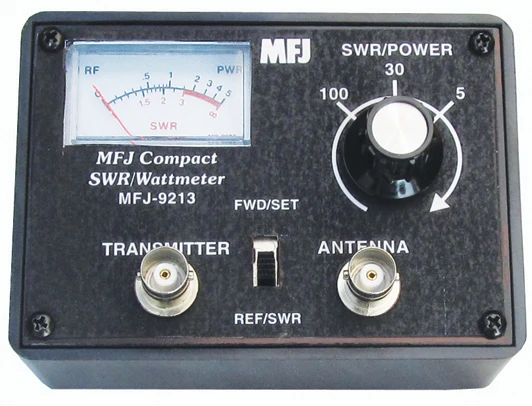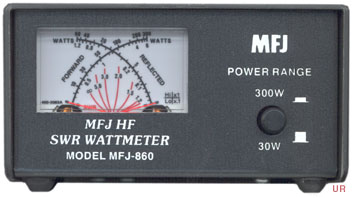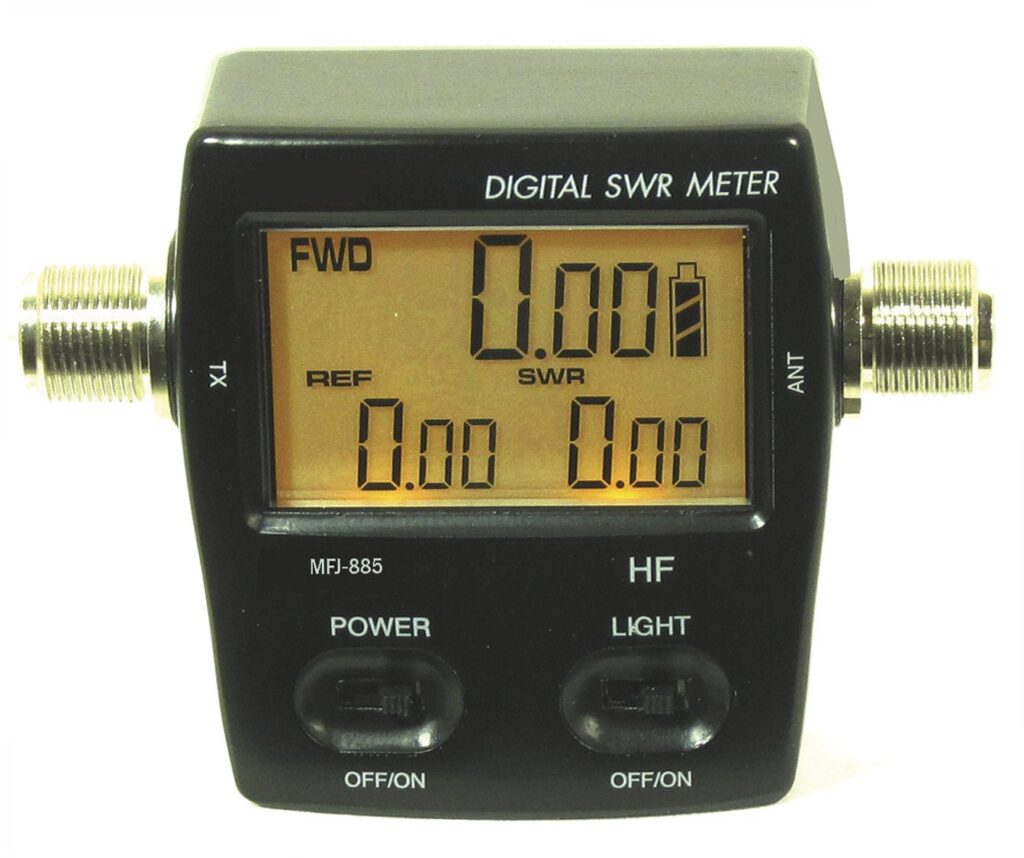If you want to monitor you system’s performance, a good SWR (standing wave ratio) meter is a key piece of hardware. With a quick glance at the meter, you can see how your radio, coax and antenna are working. SWR meters come in many shapes, sizes, and styles.

Direct reading meters such as the MFJ-9213 can be identified by a FWD-REF switch and a common dial with a single needle. These meters require the user to set the switch to FWD (forward power) and then push the microphone PTT button and stay in the transmit mode while adjusting the meter to the SET or CAL line on the meter. Then release the PTT button, set the meter to REF, and key the microphone again while reading the SWR value on the meter.

Dual or cross needle meters such as the MFJ-860 require no adjustment. Push the microphone PTT button and one needle will show the power output, while the second needle will show the reflected power. The place on the meter where the needles cross indicates the SWR.

Digital meters such as the MFJ-845 require no adjustments and are the easiest to use. Just push the microphone PTT button and directly read the values from the digital display.
So what does this thing tell me? It will tell me if my transmitter is putting out the correct power. It will tell me how much of that power is being reflected back to the transmitter and it will tell me how well my antenna system is matched to the frequency I am using.
One very important detail about SWR meters is that they are frequency specific. Using an HF meter to test UHF frequencies will result in bad readings. So always make sure that you are using an SWR meter that matches the frequency you are transmitting on. There are many of the old CB meters out there – but remember they were made to monitor frequencies around 27 Mhz and do not work well on other frequencies.